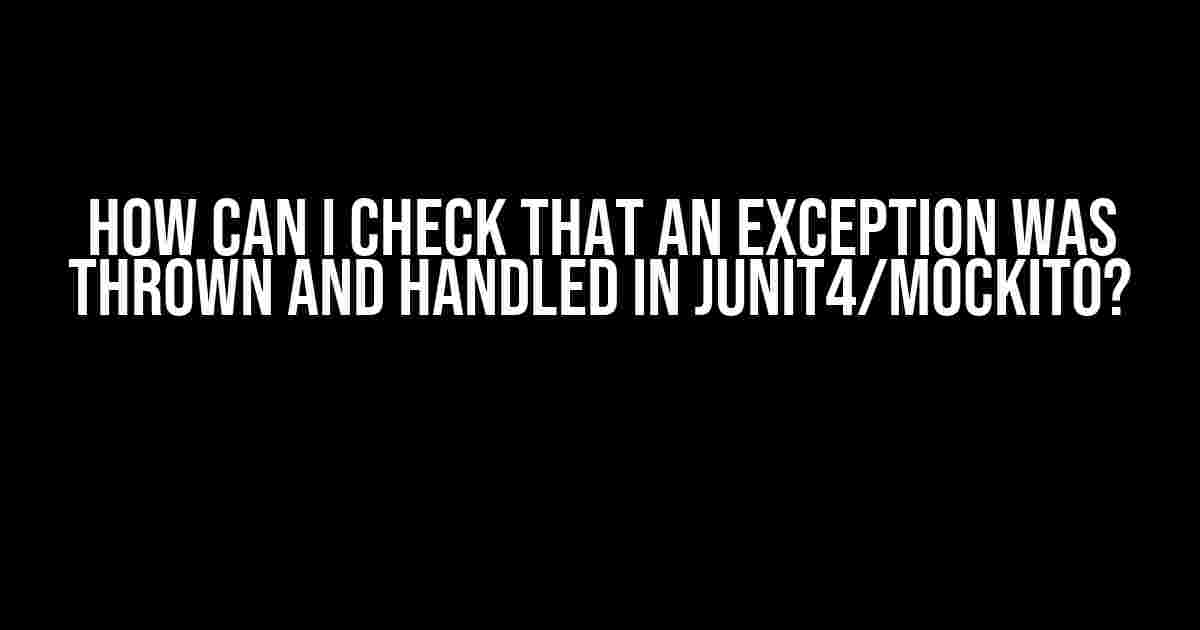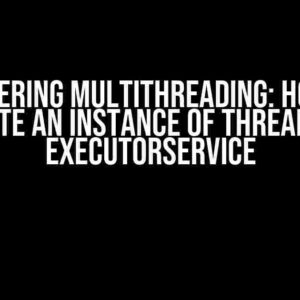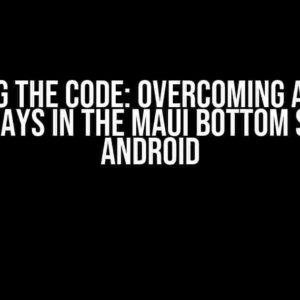When it comes to writing unit tests in Java, one of the most crucial aspects is ensuring that your code handles exceptions correctly. But how do you verify that an exception was thrown and handled properly in your JUnit4 tests, especially when using Mockito for mocking? In this article, we’ll dive into the world of exception testing and provide you with the tools and techniques to confidently assert that your code behaves as expected.
Understanding Expected Exceptions in JUnit4
JUnit4 provides a built-in mechanism for testing expected exceptions using the @Test(expected = Exception.class) annotation. This annotation allows you to specify the type of exception that is expected to be thrown by the code under test.
@Test(expected = NullPointerException.class)
public void testNullException() {
// code that throws a NullPointerException
}However, this approach has its limitations. What if you want to test that a specific exception is thrown and handled correctly? What if you need to verify that a certain method was called on a mock object when an exception occurs? That’s where Mockito comes into play.
Mockito and Exception Testing
Mockito is a popular mocking framework for Java that allows you to create mock objects and stub their behavior. When it comes to exception testing, Mockito provides a range of features that enable you to verify that exceptions are thrown and handled correctly.
Verifying Exception Types with Mockito
One way to test that an exception is thrown and handled correctly is to use Mockito’s verify method in conjunction with the ArgumentMatchers class. The ArgumentMatchers class provides a range of matchers that allow you to specify the expected exception type.
RunWith(MockitoJUnitRunner.class)
public class MyTest {
@Mock
private MyDependency myDependency;
@Test
public void testExceptionHandling() {
// stub the behavior of myDependency
when(myDependency.doSomething()).thenThrow(new IOException("Mocked exception"));
// call the method under test
myService.doSomething();
// verify that the correct exception was thrown
verify(myDependency).doSomething();
ArgumentCaptor<IOException> captor = ArgumentCaptor.forClass(IOException.class);
verify(myDependency).doSomething(captor.capture());
assertEquals("Mocked exception", captor.getValue().getMessage());
}
}In this example, we’ve used Mockito’s ArgumentMatchers class to capture the thrown exception and verify that it’s of the expected type.
Verifying Method Calls with Mockito
Sometimes, you might want to verify that a specific method was called on a mock object when an exception occurs. Mockito’s verify method allows you to do just that.
RunWith(MockitoJUnitRunner.class)
public class MyTest {
@Mock
private MyLogger myLogger;
@Test
public void testExceptionHandling() {
// call the method under test
myService.doSomething();
// verify that the correct method was called on the logger
verify(myLogger).error("An error occurred", any(Exception.class));
}
}In this example, we’ve used Mockito’s verify method to ensure that the error method was called on the myLogger mock object with the correct arguments.
Best Practices for Exception Testing
When it comes to exception testing, there are some best practices to keep in mind:
- Test for specific exceptions**: Instead of testing for generic exceptions like
Exception, test for specific exceptions that are relevant to your code. - Use meaningful error messages**: When throwing exceptions, use meaningful error messages that provide context and help with debugging.
- Test for the absence of exceptions**: Don’t just test that exceptions are thrown; also test that they’re not thrown when they shouldn’t be.
- Use Mockito’s verification mechanisms**: Mockito provides a range of verification mechanisms that allow you to test that exceptions are thrown and handled correctly.
- Keep your tests focused**: Avoid testing multiple scenarios in a single test; instead, break them down into separate tests to ensure clarity and maintainability.
Conclusion
In this article, we’ve explored the world of exception testing in JUnit4 and Mockito. By using Mockito’s verification mechanisms and following best practices, you can confidently assert that your code handles exceptions correctly. Remember to test for specific exceptions, use meaningful error messages, and verify that exceptions are thrown and handled correctly. With these techniques, you’ll be well on your way to writing robust and reliable code that can handle even the most unexpected exceptions.
| Technique | Description |
|---|---|
JUnit4’s @Test(expected = Exception.class) annotation |
Used to specify the expected exception type |
Mockito’s verify method |
Used to verify that a specific method was called on a mock object |
Mockito’s ArgumentMatchers class |
Used to specify the expected exception type and capture the thrown exception |
By mastering these techniques and following best practices, you’ll be able to write comprehensive unit tests that ensure your code is robust, reliable, and exception-free.
Further Reading
If you’re interested in learning more about exception testing and Mockito, here are some resources to get you started:
- JUnit4 Documentation: Expected Exceptions
- Mockito Documentation: Verifying Behavior
- Baeldung: JUnit Expected Exceptions Tutorial
- Vogella: Mockito Tutorial
Happy testing!
Frequently Asked Question
Are you stuck in the loop of debugging and wondering how to check if an exception was thrown and handled in JUnit4/Mockito? Fear not, dear developer, for we’ve got the answers for you!
How can I verify that an exception was thrown using JUnit4?
You can use the @Test expected attribute to specify the exception class that is expected to be thrown. For example: @Test(expected = NullPointerException.class) public void testNullException() { … }. This will pass the test if the specified exception is thrown, and fail otherwise.
How can I verify that an exception was thrown using Mockito?
You can use the verify method to check if a specific exception was thrown. For example: verify(mockObject, times(1)).throwException(new RuntimeException(“Mocked exception”)); This will verify that the mockObject threw a RuntimeException with the specified message.
How can I assert that an exception was handled correctly in JUnit4?
You can use a try-catch block in your test method and assert that the exception was handled correctly. For example: try { … } catch (Exception e) { Assert.assertEquals(“expected message”, e.getMessage()); }. This will verify that the exception was caught and handled with the expected message.
How can I test that a method throws an exception when given invalid input using JUnit4?
You can use a try-catch block in your test method to test that the method throws an exception when given invalid input. For example: try { methodUnderTest(null); fail(“Expected NullPointerException”); } catch (NullPointerException e) { /* expected */ }. This will verify that the method throws a NullPointerException when given null input.
How can I use JUnit’s ExpectedException rule to test that an exception is thrown?
You can use the @Rule annotation to specify an ExpectedException rule in your test class. For example: @Rule public ExpectedException exception = ExpectedException.none();. You can then use the expect method to specify the exception class and message: exception.expect(NullPointerException.class); exception.expectMessage(“expected message”);. This will verify that the specified exception is thrown with the expected message.




